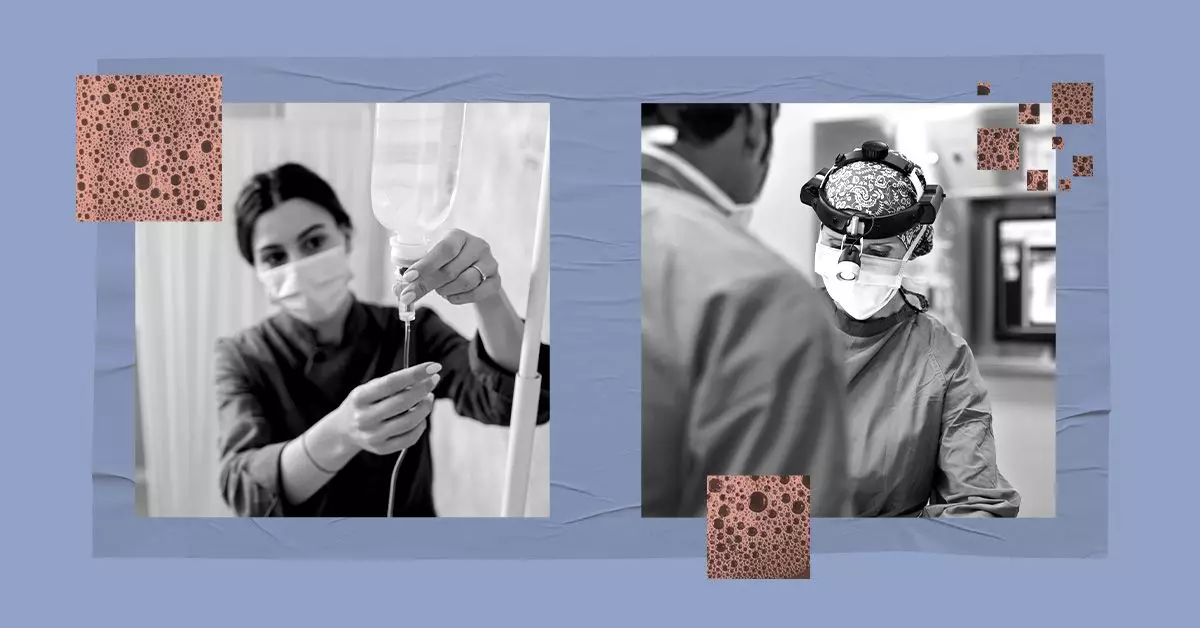Ewing sarcoma, a rare and aggressive form of cancer, primarily impacts the bones or surrounding soft tissues, such as nerves or cartilage. This cancer typically affects children, adolescents, and young adults, presenting unique challenges for treatment. As a multifaceted disease, Ewing sarcoma necessitates a comprehensive treatment strategy that encompasses various medical specialties including oncology, surgery, and radiation therapy. This article explores the intricacies of Ewing sarcoma treatment, highlighting the rationale behind various therapeutic interventions and the importance of personalized medicine.
Ewing sarcoma is characterized by its rapid progression and aggressive nature. The etiology of this cancer is not fully understood, but genetic mutations and chromosomal abnormalities have been identified as significant contributors. The disease often arises in the long bones, such as the arms and legs, but it can also develop in soft tissues. Because it predominantly affects younger individuals, the psychological and emotional burdens can be profound, necessitating both medical and supportive interventions.
The treatment of Ewing sarcoma relies on a multidisciplinary team, including oncologists, surgeons, and radiologists. This collaborative model enables the design of a tailored treatment strategy that addresses individual patient profiles—taking into account the tumor’s location, size, disease stage, and the presence of metastases. For instance, localized Ewing sarcoma, which is confined to the primary site, may require a different approach than metastatic disease which has spread to distant organs.
The primary goals of treatment are to eradicate cancer cells, preserve as much bodily function as possible, and minimize long-term complications. By employing a combination of chemotherapy, surgery, and radiation therapy, healthcare providers can achieve these objectives. Chemotherapy is often the first-line treatment, especially for systemic disease, as it combats microscopic cancer spread that may not be detectable through traditional imaging.
Chemotherapy serves as a critical component of Ewing sarcoma management. The most commonly used regimens include combinations of medications such as vincristine, doxorubicin, cyclophosphamide, ifosfamide, and etoposide—usually administered in cycles over several months. This systemic approach allows for the targeting of rapidly dividing cancer cells and is instrumental in shrinking tumors prior to surgical intervention.
The effectiveness of chemotherapy lies in its ability to reduce tumor size, making surgical resections more manageable and increasing the likelihood of limb preservation. Clinical monitoring during chemotherapy is essential to manage potential side effects, which can include nausea, hair loss, and an increased risk of infection.
Surgery plays a pivotal role in the treatment regimen for localized Ewing sarcoma. When feasible, limb-sparing procedures are preferred to maintain function and look of the affected limb. The surgical team must carefully weigh factors such as tumor size, location, and the response to chemotherapy when planning the procedure.
In certain cases, if complete resection is not possible, surgery can still be employed to debulk the tumor or alleviate symptoms. The involvement of experienced surgeons is crucial to preserving surrounding nerves, blood vessels, and tendons, thereby optimizing recovery and functional mobility post-operatively.
Radiation therapy is an additional treatment modality that is frequently used in conjunction with surgery or as a standalone treatment when surgical options are limited. It involves high-energy beams focused on killing residual cancer cells, thus minimizing the chance of recurrence. Advances such as intensity-modulated radiation therapy allow for targeted treatment that reduces exposure and damage to surrounding healthy tissues, resulting in fewer side effects.
Moreover, the timing of radiation therapy is integral to its effectiveness. Patients may receive radiation preoperatively to shrink the tumor or postoperatively to target any remaining cancerous cells. The collaborative approach across surgical and oncological disciplines enhances the overall effectiveness of the treatment plan.
As research in cancer treatment continues to evolve, clinical trials play a vital role in testing innovative therapies for Ewing sarcoma. These may include targeted therapies aimed at specific molecular pathways or immunotherapies designed to enhance the body’s natural defenses against cancer. Participation in clinical trials can provide patients with access to cutting-edge treatments that may not yet be widely available and contribute to ongoing research efforts to improve future outcomes.
The journey of navigating Ewing sarcoma doesn’t end with treatment; individuals often face ongoing physical and emotional challenges. Integration of supportive services, including psychological counseling, financial assistance programs, and rehabilitation services, can immensely improve a patient’s quality of life.
Support groups provide an avenue for shared experiences, enabling families and patients to connect with others undergoing similar challenges. Continuous follow-up care is crucial to manage late effects of treatment, ensuring that individuals maintain their quality of life long after completing active treatment.
The treatment of Ewing sarcoma is a complex and evolving process that involves a multidisciplinary approach tailored to each patient’s needs. Combining chemotherapy, surgery, radiation therapy, and emerging therapies offers the best chances for positive outcomes. With ongoing advancements in research and supportive care, the landscape for treating Ewing sarcoma continues to improve, providing hope for many affected individuals and their families.

